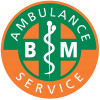“FREC 3” and “FREC 4” within the context of pre-hospital care and emergency medical training in the United Kingdom.
In the context of pre-hospital care and emergency medical training in the United Kingdom, “FREC” stands for “First Response Emergency Care.” FREC qualifications are designed to provide individuals with the necessary knowledge and skills to respond effectively to medical emergencies and provide immediate care to patients before they reach a hospital or other healthcare facility. These qualifications are often sought by individuals working in roles such as emergency first responders, ambulance technicians, or other positions within the pre-hospital care sector.
- FREC 3 (First Response Emergency Care Level 3): FREC 3 is a qualification designed for individuals who wish to work as emergency first responders in various settings, such as events, private companies, or organizations that require a higher level of first aid provision. It provides a comprehensive foundation in medical emergencies and pre-hospital care. FREC 3 covers a broad range of topics, including patient assessment, airway management, resuscitation, trauma management, and administration of emergency medical gases. With FREC 3, you can work as an emergency first responder in non-emergency ambulance services, event medical teams, and other similar roles.
- FREC 4 (First Response Emergency Care Level 4): FREC 4 is an advanced level qualification designed for individuals who aspire to work in roles with greater responsibility and more advanced skills within the pre-hospital care sector. It builds upon the knowledge and skills acquired in FREC 3. FREC 4 includes topics such as advanced airway management, advanced trauma care, pharmacology, and medical emergencies. This qualification prepares individuals to work in roles such as emergency care assistants, associate practitioners, and other positions within ambulance services or private medical companies where higher-level clinical skills are required.
It’s important to note that the specific requirements and recognition of these qualifications may vary depending on the awarding bodies or training providers in different regions. It’s recommended to consult with reputable training providers or relevant organizations to get the most accurate and up-to-date information on first aid qualifications and their corresponding job opportunities.
Having either of these, may well be a qualification but experience. confidence and knowing when do so something, and when to not do something is also very important.
What’s next? After FREC3 and then FREC4?
In the context of pre-hospital care and emergency medical training in the United Kingdom, there is no specific “FREC 5” qualification that follows FREC 4. After completing FREC 4, individuals may choose to pursue further advanced qualifications in the field of pre-hospital care or emergency medicine. The specific qualifications available may vary depending on the individual’s career goals, training provider, and the requirements of the organization they wish to work for. There is a FREC4+ that encompasses extra skills relating to administering certain extra skills and recovery.
Some potential advanced qualifications that individuals might consider after FREC 4 include:
- Paramedic Science Degree: This is a university degree program that provides comprehensive training in pre-hospital care and qualifies individuals to work as paramedics. It typically involves a combination of theoretical study and practical clinical placements.
- Foundation Degree in Paramedic Science: Similar to the paramedic science degree, this is a two-year higher education program that combines academic study with practical training, focusing on pre-hospital care and paramedic practice.
- Advanced Life Support (ALS) Courses: ALS courses, such as the Advanced Cardiovascular Life Support (ACLS) or Advanced Trauma Life Support (ATLS), provide advanced training in managing life-threatening medical emergencies. These courses are often targeted at healthcare professionals and focus on advanced resuscitation techniques and critical care skills.
It’s important to note that the availability and recognition of these qualifications may vary depending on the region and the specific requirements of the healthcare system or employer. It’s advisable to research and consult with relevant training providers, professional organizations, or employers to determine the most appropriate and recognized pathway for career advancement in the field of pre-hospital care.
In all of this, you need to have the confidence to be able to act when needed, and this can come by joining the right organisation, with a sold crew mate or buddy, being mentored and allowed to have a go, make small mistakes and take correction as a positive. In the right environment, a career in pre-hospital care care or emergency response is possible. Some people start as community first responders in their own community.
What is a CFR?
A volunteer community first responder (CFR) is an individual who provides immediate emergency medical assistance in their local community. CFRs are trained to respond quickly to medical emergencies, such as cardiac arrests, breathing difficulties, and other life-threatening situations, before the arrival of professional medical services, such as ambulances.
CFRs are typically volunteers who offer their time and skills to support the local emergency medical services. They are trained and equipped with basic life-saving skills, including cardiopulmonary resuscitation (CPR), first aid, and the use of automated external defibrillators (AEDs). Their role is to provide critical care and support to patients in the crucial moments before the arrival of professional paramedics or ambulance crews.
The responsibilities of a volunteer community first responder can include:
- Promptly responding to emergency calls within their local community.
- Assessing and providing initial medical care to patients.
- Administering CPR and using AEDs when necessary.
- Stabilizing patients and providing support until professional medical help arrives.
- Communicating and coordinating with the emergency services to ensure a seamless transfer of care.
CFRs often work in partnership with local ambulance services or organizations such as the British Red Cross, St. John Ambulance, or other community-based responder schemes. They play a vital role in improving survival rates and reducing the impact of medical emergencies by providing immediate care and assistance to patients in their community.
